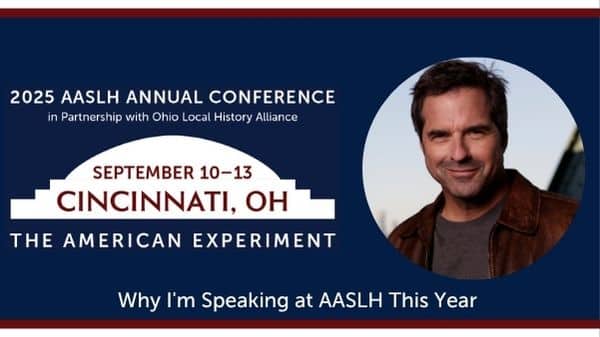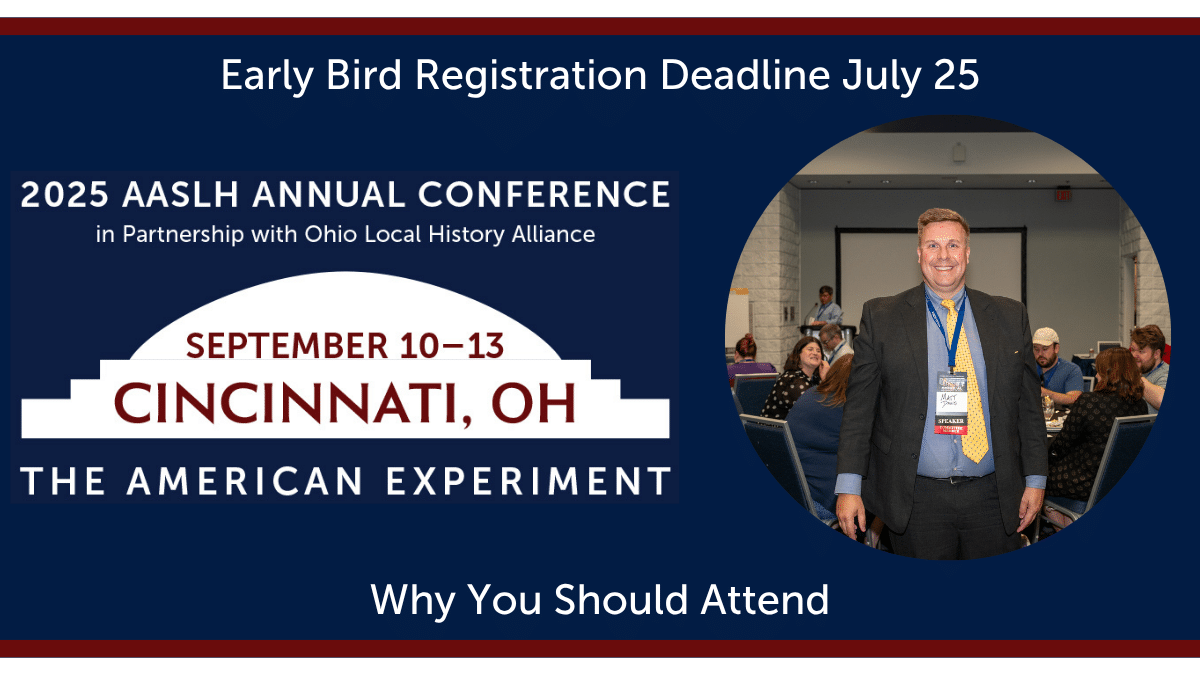
By Bethany Hawkins, AASLH Chief of Operations
The 2023 AASLH Annual Conference will be held in Boise, Idaho, on September 6-9. The theme for the conference is I, Too, Am America. This theme will challenge attendees to think about what “We the People” really meant in the past and what it means today.
Idaho has a rich, complicated history. To help learn more about the people and landscape of Idaho, past and present, here is a list of books recommended by Boise State Public Radio, the Idaho Press, and Boise State University.
The Big Burn: Teddy Roosevelt and the Fire that Saved America
by Timothy Egan
On the afternoon of August 20, 1910, a battering ram of wind moved through the drought-stricken national forest of Washington, Idaho, and Montana, whipping the hundreds of small blazes burning across the forest floor into a roaring inferno. Forest rangers had assembled nearly 10,000 men, college boys, day workers, and immigrants from mining camps to fight the fire. But no living person had seen anything like those flames, and neither the rangers nor anyone else knew how to subdue them.
Chief Joseph & the Flight of the Nez Perce: The Untold Story of an American Tragedy
by Kent Nerburn
Hidden in the shadow cast by the great western expeditions of Lewis and Clark lies another journey every bit as poignant, every bit as dramatic, and every bit as essential to an understanding of who we are as a nation — the 1,800-mile journey made by Chief Joseph and 800 Nez Perce men, women, and children from their homelands in what is now eastern Oregon through the most difficult, mountainous country in western America to the high, wintry plains of Montana. There, only 40 miles from the Canadian border and freedom, Chief Joseph, convinced that the wounded and elders could go no farther, walked across the snowy battlefield, handed his rifle to the U.S. military commander who had been pursuing them, and spoke his now-famous words, “From where the sun now stands, I will fight no more forever.”
Educated
by Tara Westover
Born to survivalists in the mountains of Idaho, Tara Westover was 17 the first time she set foot in a classroom. Her family was so isolated from mainstream society that there was no one to ensure the children received an education and no one to intervene when one of Tara’s older brothers became violent. When another brother got himself into college, Tara decided to try a new kind of life. Her quest for knowledge transformed her, taking her over oceans and across continents, to Harvard and to Cambridge University. Only then would she wonder if she’d traveled too far, if there was still a way home.
Gay Bars in Boise, Idaho 1976 — 2021: A General and Very Personal History
by Dean Worbois
Worbois writes about all past and current LGBTQ bars in Boise and interviewed many members of the community and their experiences. The book is interspersed with personal stories from Worbois, who was 31 when the first gay bar opened in Boise in 1976, and members of the LGBTQ community as well as historical photos. There are also stories on bars that are open now, like The Balcony. The book provides an interesting look at the LGBTQ community in Boise.
Idaho: The Land and Its People
by Keith C. Petersen
Written by Idaho’s state historian, Idaho: The Land and its People is a companion guide to the Idaho State Museum’s permanent exhibition of the same name.
Minidoka: An American Concentration Camp
by Teresa Tamura
On February 19, 1942, President Franklin D. Roosevelt signed Executive Order 9066, authorizing U.S. Armed Forces to remove citizens and non-citizens from “military areas.” The result was the abrupt dislocation and imprisonment of 120,000 Japanese and Japanese American citizens in the western United States. Teresa Tamura documents one of 10 such camps, the Minidoka War Relocation Center in Jerome County, Idaho. Her documentation includes artifacts made in the camp as well as the story of its survivors, uprooted from their homes in Alaska, Washington, Oregon, and California. The essays are supplemented by 180 black-and-white photographs and interviews that fuse present and past.
In the Wilderness: Coming of Age in Unknown Country
by Kim Barnes
Poet Kim Barnes grew up in northern Idaho, in the isolated camps where her father worked as a logger and her mother made a modest but comfortable home for her husband and two children. Their lives were short on material wealth, but long on the riches of family and friendship, and the great sheltering power of the wilderness. But in the mid-1960s, as automation and a declining economy drove more and more loggers out of the wilderness and into despair, Kim’s father dug in and determined to stay. It was then the family turned fervently toward Pentecostalism. It was then things changed.
Massacred for Gold: The Chinese in Hells Canyon
by Gregory Nokes
In 1887, more than 30 Chinese gold miners were massacred on the Oregon side of Hells Canyon, the deepest canyon in North America. Massacred for Gold, the first authoritative account of the unsolved crime—one of the worst of the many crimes committed by whites against Chinese laborers in the American West—unearths the evidence that points to an improbable gang of rustlers and schoolboys, one only 15, as the killers. In bringing this story out of the shadows, Nokes examines the once-substantial presence of Chinese laborers in the interior Pacific Northwest, describing why they came, how their efforts contributed to the region’s development, and how too often mistreatment and abuse were their only reward.
Nuestros Corridos (Latinos in Idaho): Idaho Latino History through Song and Word
by Ana Maria Nevarez-Schachtell, and Kathleen Rubinow Hodges
Sponsored by Idaho Humanities Council
Boise State University Investigate Boise Community Research Series:
Half the World: Refugees Transform the City of Trees
Nearly 1 out of every 100 people worldwide is a person displaced and seeking asylum, imperiled by persecution and war. Half the World takes measure of that staggering crisis in stories from a city transformed. Boise, Idaho, offers a calmer perspective. Located at the base of the Rocky Mountains, in one of the whitest of American places in one of the reddest American states, 13,000 refugees from at least 53 countries are rebuilding their lives. Half the World, herein, samples their transformative stories. A book of history, reporting, poetry, and memoir, the collection queries how communities cope with the shock of forced migration and how strangers among us confront the foreign and unfamiliar by helping others find the best in themselves.
The Other Idahoans: Forgotten Stories of the Boise Valley
Fallen angels in the bawdy houses. Migrants barred from Main Street. Homesteaders driven from homesteads when August rained black storms of dust. The Other Idahoans recovers their hard-luck stories. Volume 7 of Boise State University’s prize-winning research series, the book closes with a driving tour of storied places from history’s underside.
Becoming Basque: Ethnic Heritage on Boise’s Grove Street
Becoming Basque tells the richly historical story of Boise’s most ethnic streetscape. Centered on the Basque Block of Grove Street, where a sapling from the Tree of Gemika shades a world-renowned cultural center, the book is the fifth in an annual series on trends that shape metropolitan growth.
Documentaries
There are also some interesting documentaries about Idaho and its people.
Idaho Public Television, The Idaho Experience Series
In 2017, Idaho Public Television launched Idaho Experience, expanding its storytelling platform in the tradition of PBS’s long-running and peerless program American Experience. Producing balanced, engaging, and in-depth programs, the Idaho Experience historical documentary series strives to provide audiences with a better understanding of the key events and individuals that have shaped Idaho.
Untapped: The Story of Beer in Boise
The Great American Beer Fest this year featured 101 categories of beer. Some of the top awards went to the small brewers. How do they compete? What other surprises will we find in the towns where they brew for gold? Untapped showcases three small town Boise brewers in their native habitats–hip pubs and warehouses turned hangouts in a town on the edge of the next big thing.
The Fall of ‘55
In late 1955 and early 1956, the citizens of Boise, Idaho believed there was a menace in their midst. On Halloween, investigators arrested three men on charges of having sex with teenage boys. The investigators claimed the arrests were just the tip of the iceberg–they said hundreds of boys were being abused as part of a child sex ring. There was no such ring, but the result was a widespread investigation which some people consider a witch hunt. By the time the investigation ended, 16 men were charged. Countless other lives were also touched. In some cases, men implicated fled the area. At least one actually left the country.
Add the Words
Michael Gough and Cammie Pavesic started working on their film the day after 44 people, including former Senator Nicole LeFavour, were arrested for blocking the Idaho State Capital senate chambers. Over the next few days, they gathered enough footage to take what was supposed to be a 10-20 minute video and turn it into a full-length film. The documentary gets up close and personal as activists work to have the words “sexual orientation” and “gender identity” added to Idaho’s legislation regarding discrimination in the workplace and housing.



